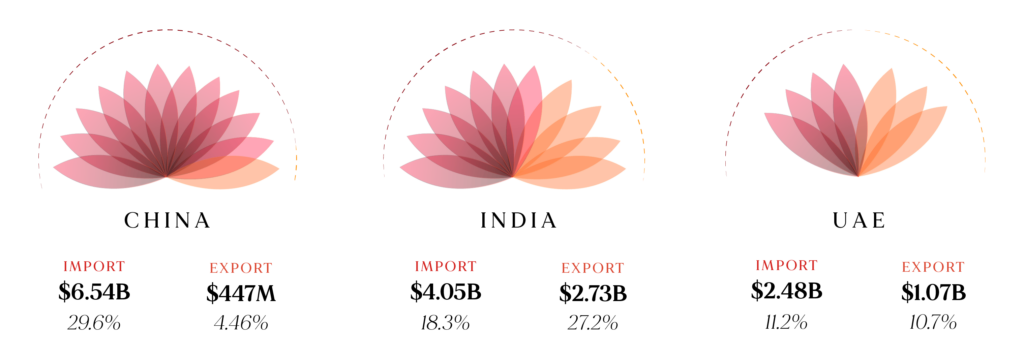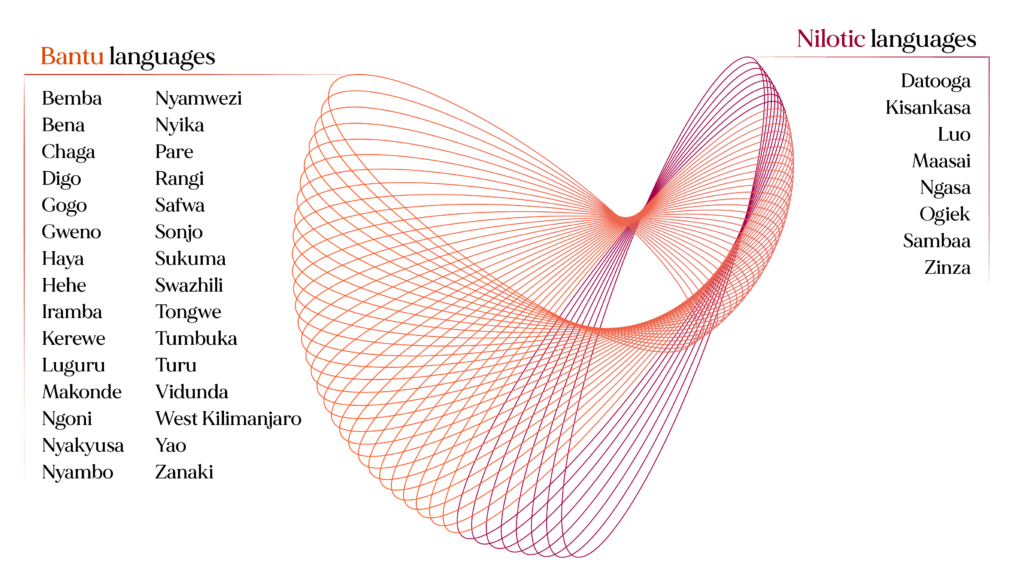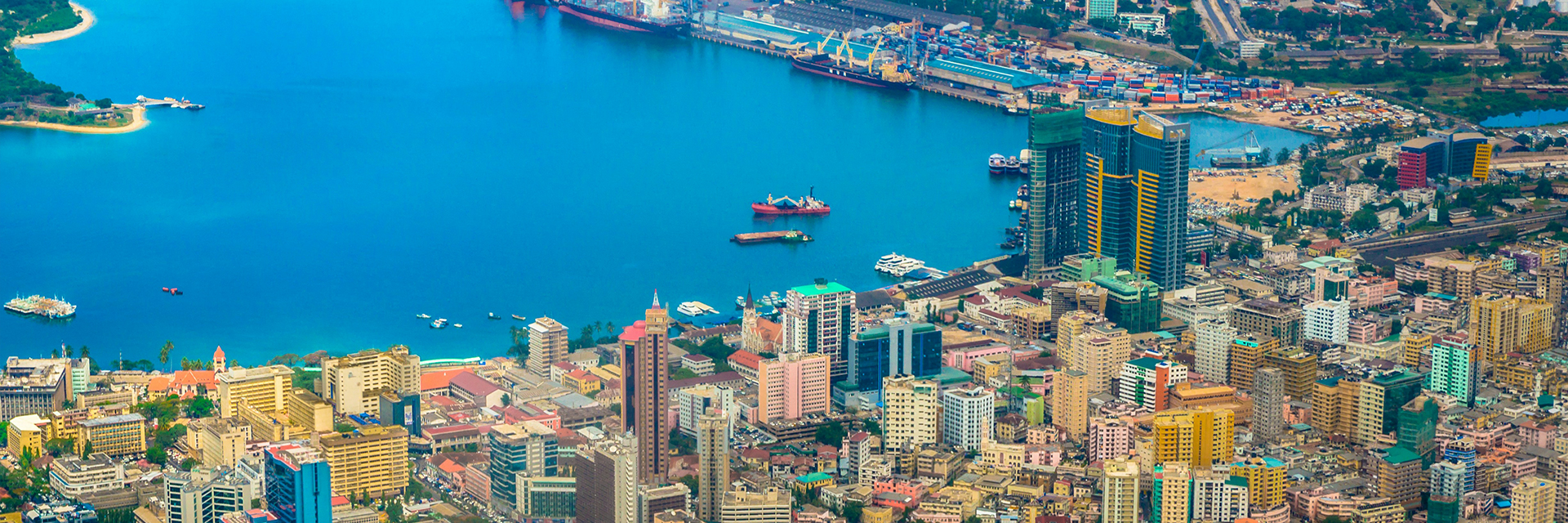Africa
To which language should you translate to localize in Tanzania?
LANGUAGE INSIGHT
Official language
Swahili (8.8%)
Actual languages
Nyamwesi (21.1%), Swahili (8.8%), Hehet (6.9%), Haya (5.9%), Makonde (5.9%), Nyakusa (5.4%), Chaga (4.9%), Luguru (4.9%), Shambala (4.3%), Gogo (3.9%), Ha (3.5%), other (24.5%)
What the top 150 best localized websites in the world do in Tanzania
(Top 150 websites listed in the Global by Design ranking – published annually by Byte Level Research, this report provides a list of globally localized websites, showcasing best practices and emerging trends in their globalization)
- 5/150 localize by translating into Swahili
- 1/150 localizes by translating into Arabic, Swahili and Kamba
- 1/150 localizes by translating into Swahili, Tanzanian Sign Language and Kamba
- 1/150 localizes by translating into both Arabic and Swahili
- 1/150 localizes by translating into both French and Arabic
- 1/150 localizes by translating into both French and Portuguese
- 1/150 localizes by translating into French
- 1/150 localizes by translating into Arabic
- 1/150 localizes by translating into French, Portuguese, Italian, German, Spanish, Polish, Simplified, Chinese, Traditional Chinese, Japanese, Hungarian, Russian, Bahasa Indonesia, Romanian, Turkish, Ukrainian and Thai
-
3M
-
ABB
-
Accenture
-
Adidas
-
Adobe
-
Airbnb
-
Aldi
-
Amazon
-
American Airlines
-
American Express
-
Apple
-
Audi
-
Autodesk
-
Avis
-
Bayer
-
BMW
-
Booking.com
-
Bosch
-
British Airways
-
Bumble
-
Burberry
-
BYD
-
Canon
-
Capgemini
-
Cartier
-
Caterpillar
-
Chevrolet
-
Cisco Systems
-
Citibank
-
Coca-Cola
-
Costco
-
Dell
-
Deloitte
-
Delta
-
DHL
-
Disney+
-
Dyson
-
eBay
-
Eli Lilly
-
Emirates
-
Ernst & Young
-
Facebook
-
FedEx
-
Ford
-
Four Seasons
-
Fujifilm
-
GE
-
Gillette
-
GoDaddy
-
Google
-
Gucci
-
Haier
-
Heineken
-
Hermès
-
Hertz
-
Hilton
-
Hisense
-
Hitachi
-
Honda
-
Hotels.com
-
HP
-
HP Enterprise
-
HSBC
-
Huawei
-
Hyatt
-
Hyundai
-
IBM
-
IKEA
-
Intel
-
InterContinental Hotels
-
J&J
-
Jack Daniel's
-
Jehovah’s Witnesses
-
John Deere
-
Kellogg's
-
Kia
-
KPMG
-
L'Oréal
-
Land Rover
-
LEGO
-
Lenovo
-
Lexus
-
LG
-
Louis Vuitton
-
Lululemon
-
LUSH
-
Marriott
-
MasterCard
-
McDonald's
-
Mercedes-Benz
-
Merck
-
Microsoft
-
Mitsubishi Electric
-
Nestlé
-
Netflix
-
Nike
-
Nikon
-
Nintendo
-
Nio
-
Nissan
-
NIVEA
-
Oracle
-
Pampers
-
Panasonic
-
PayPal
-
Pepsi
-
Pfizer
-
Philips
-
Pitney Bowes
-
Porsche
-
Procter & Gamble
-
PWC
-
Revolut
-
Rolex
-
Royal Caribbean
-
Salesforce
-
Samsung
-
Sanofi
-
SAP
-
Sephora
-
Shopify
-
Siemens
-
Sony
-
Spotify
-
Starbucks
-
Steelcase
-
Stripe
-
Subaru
-
Tesla
-
The Church of Jesus Christ of Latter-day Saints
-
Tiffany
-
Tinder
-
Toshiba
-
Toyota
-
TripAdvisor
-
Uber
-
United Airlines
-
UPS
-
Visa
-
Volkswagen
-
Volvo Cars
-
Vrbo
-
Walmart
-
Western Union
-
Wikipedia
-
Wise
-
WordPress
-
Workday
-
Xerox
-
Xiaomi (Mi)
-
Zara
-
Zoom
If you need others information, below you can find a selection of economic/social/cultural data
Overview
Language
Official language
Swahili (8.8%)
T-index
0.041%
T-Index ranks countries according to their potential for online sales.
Actual languages
Nyamwesi (21.1%), Hehet (6.9%), Haya (5.9%), Makonde (5.9%), Nyakusa (5.4%), Chaga (4.9%), Luguru (4.9%), Shambala (4.3%), Gogo (3.9%), Ha (3.5%), other (24.5%)
English
Low proficiency (EF) – 67 of 113 countries/regions in the world- 7/23 position in Africa.
Demography
Capital: Dodoma
Currency: Tanzanian shilling
Population: 65.497 m
Population density: 72/km2
Economy
GDP: 75.732 billion USD (2022)
GDP per capita: 1.192,8 USD (2022)
Exports: $10 billion (2022)
Statistics
Internet users: 31.9% penetration, 21.82 million
Unemployment rate: 2.6% (2023)
Urbanisation: 36.68% (2022)
Literacy: 82% (2022)
Conventions
Numbering system
Arabic numerals and comma as decimal separator
Date format: dd – mm – yyyy
Time: 12h time system (a.m/p.m)
Country code: 00255
Language data sources: Worldatlas/Britannica//EF/Wikipedia; Demography data sources: IMF/Worldometers; Conventions data source: Wikipedia; Economy data sources: WTO/OEC/CIA/Esomar/Datareportal; Statistics data sources: Datareportal/WorldBank/UN/UNESCO/CEIC/IMF/Culturalatlas/Commisceoglobal/Worlddata.info
Facts and data
Economy
Imports
$22.1 billion (2022). Refined Petroleum ($5.19B), Refined Copper ($1.17B), Vaccines, blood, antisera, toxins and cultures ($432M), Packaged Medicaments ($368M), and Cars ($318M), importing mostly from China ($6.54B), India ($4.05B), United Arab Emirates ($2.48B), Democratic Republic of the Congo ($1.17B), and Saudi Arabia ($548M).
Financial inclusion factors (over 15 years of age)
• 21% have an account with a financial institution
• 13.3% have a credit card
• 38.5% have a mobile money account
• 12% make online purchases
Ease of doing business
Ease of conducting business is medium (rated 54.5 out of 100). Ranked 22nd out of 48 Sub-Saharan Africa countries. Ranked 141st out of 190 countries worldwide (2022, World Bank).
Exports
$10 billion (2022). Gold ($3.34B), Raw Copper ($1.31B), Refined Copper ($384M), Copper Ore ($288M), and Coconuts, Brazil Nuts, and Cashews ($286M), exporting mostly to India ($2.73B), United Arab Emirates ($1.07B), South Africa ($939M), Kenya ($482M), and Rwanda ($474M).
Economic freedom
‘Mostly not free’ (rated 59.1 out of 100). Ranked 6th out of 47 Sub-Saharan Africa countries. Ranked 86th out of 186 countries worldwide (2023, Heritage Foundation and Wall Street Journal).
Global Innovation Index
Ranked 13th out of 28 Sub-Saharan Africa, and 113th out of 132 worldwide.
The Global Innovation Index captures the innovation
ecosystem performance of 132 economies and tracks the most recent global innovation trends.
Economy data sources: WTO/OEC/CIA/Esomar/Datareportal
Service Imports (2018)
Service Exports (2018)
Source: OEC
Top 3 Trade Partners

Source: OEC
Trade balance of goods from 2012 to 2022
Source: Statista
Historical Data Trade Imports (2018)
The following section uses historical trade data imports from partners of Tanzania.
Historical Data Trade Exports (2018)
The following section uses historical trade data exports from partners of Tanzania.
Source: OEC
The Top Export Opportunities for Tanzania by Relatedness
Relatedness measures the distance between a country's current exports and each product by showing only products that Tanzania is not specialized in.
Tanzania's Most Complex Exports
The Product Complexity Index (PCI) measures the knowledge intensity of a product by considering the knowledge intensity of its exporters.
Source: OEC
Tanzania's Most Specialized Products
Specialization is measured using Revealed Comparative Advantage (RCA), an index that takes the ratio between Tanzania observed and expected exports in each product.
Source: OEC
Market Growth Imports (2018)
This score represents the likelihood that the given country will start importing that product in the next few years. It forecasts the opening of a new specific market.
Market Growth Exports (2018)
This score represents the likelihood that the given country will start exporting that product in the next few years. It forecasts the opening of a new specific market.
Source: OEC
Foreign direct investment, net inflows (% of GDP)
Source: WorldBank

T-index
Reach most of the online purchasing power
T-Index ranks countries according to their potential for online sales. It estimates the market share of each country in relation to global e-commerce.
Try it nowMedia
Media language Swahili, English
Information channels
Under John Magufuli the government cracked down on its critics, including the press. Samia Suluhu Hassan, who became president after Magufuli’s death in 2021, has begun to reverse these trends. The government has lifted bans and suspensions of several major newspapers. Freedom House says while there has been an increase in qualified criticism of the government, “self-censorship and pro-government bias remain prevalent”. The mainland and Zanzibar have separate media policies. Islanders can pick up broadcasts from the mainland and read the mainland press. Television is eroding radio’s traditional dominance, and Tanzania has made the switch to digital TV. Media ownership is highly concentrated. IPP Media and the state-run Tanzanian Broadcasting Corporation are major players. There were 23.1 million internet users by December 2021, comprising 37% of the population (Worldinternetstats.com). Facebook is the most popular social platform. Rules introduced in 2018 require bloggers and the owners of discussion platforms and streaming services to pay registration fees.
Television
Tanzania Broadcasting Corporation (TBC) – state-run
Independent Television (ITV) – private, reportedly the most influential in the country
Azam TV – private, station operates three channels featuring news, entertainment, documentaries
Clouds TV – private media group, TV and radio
Radio
Tanzania Broadcasting Corporation (TBC) – state-run
Radio Free Africa – private
Radio One – private
Capital Radio – private
East Africa Radio – private
The press
Daily News – government owned, Tanzania’s oldest newspaper
Habari Leo – in Swahili, from publisher of Daily News
The Guardian – private, Tanzania’s leading daily, owned by IPP Medai group
Financial Times – business news, also owned by IPP Media
The Citizen – private
Nipashe – private, in Swahili
Media data source: BBC
Internet Data
Internet users
31.9% penetration, 21.82 million.
Share of web traffic by device
76.57% mobile phones, 22.64% computers (laptops and desktops), 0.78% tablet devices.
Median speed of mobile Internet connection
22.61 Mbps
Median speed of fixed Internet connection
17.99 Mbps
Mobile connection as a percentage of total population: 99%
Percentage of mobile connections that are broadband (3G-5G): 81.1%
Most popular web search engines
Google (97.3%), Bing (2.19%), Yahoo (0.22%), DuckduckGo (0.17%), Yandex Ru (0.03%).
Most used social media
Facebook (45.91%), Twitter (18.71%), Pinterest (14.38%), Instagram (10.6%), YouTube (9.38%), Linkedin (0.52%), Tumblr (0.04%).
Internet data sources: Datareportal/Statcounter
Social statistics
Life expectancy
66 yrs (2021)
Corruption perceptions Index
Tanzania scored 38 out of 100, ranked 94 out 180 countries worldwide.
Current health expenditure
3.75% of GDP
Ethnicity
More than 120 ethnic groups are represented in Tanzania. Each of these groups differs, to varying degrees, from other groups in culture, social organization, and language. Only the smallest groups are homogeneous, however. Most groups are characterized by some internal variation in language and culture. The largest ethnic group, the Sukuma, represents nearly 13% of the total population; the remaining large groups represent under 5% each. Ethnicity continues to reflect geographic area. Less than 1% of Tanzania’s population is made up of non-Africans, including Europeans, Asians, and Arabs.
Religion
Religion adoption varied across residential areas in Tanzania as of 2021. In urban regions, over 40 percent of respondents declared being Muslims, while this share stood at nearly 25 percent in rural areas. In urban and rural regions, around 15 percent and 14 percent of the surveyed population, respectively, identified as Christians only. Among Christian religions, Roman Catholic was the most followed – by 27 percent of respondents in rural areas and 20.8 percent in urban areas.
World Happiness Index
Tanzania ranked 139 out of 180 countries, with a score of 3.702.
CO2 emissions
0.2 metric tons per capita
Social statistics sources: WorldBank/UN/UNESCO/CEIC/IMF
The Data Factbook is a work in progress project. Our community is helping us to fill it up always with new and updated data. Your contribution is precious. If you want to help us, please write your advices at imminent@translated.com
Languages research
Indigenous languages spoken in Tanzania

Source: Ethnologue
The geographical distribution of languages that you will find in the maps published in this section is a work in progress. Our community is helping us to fill it up with always new and updated data. Your contribution is precious. If you want to help us, please write to imminent.factbook@translated.com
Photo credit: Peter Mitchell, Unsplash


